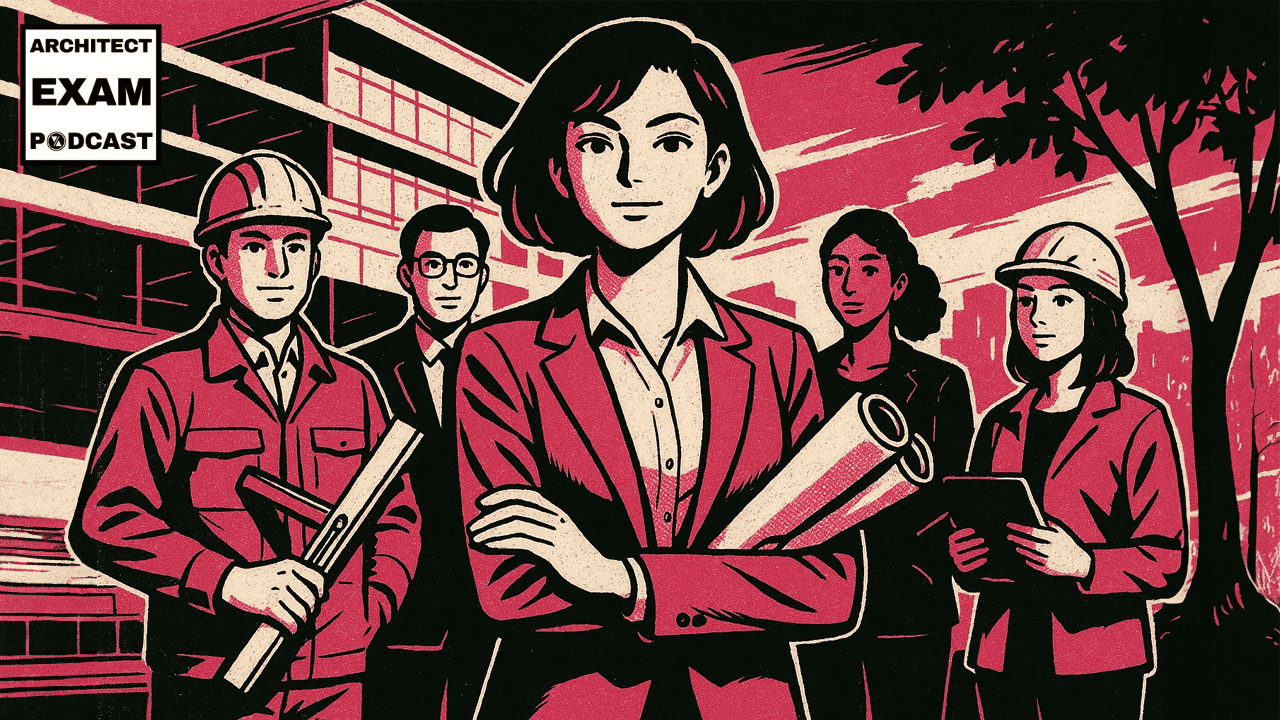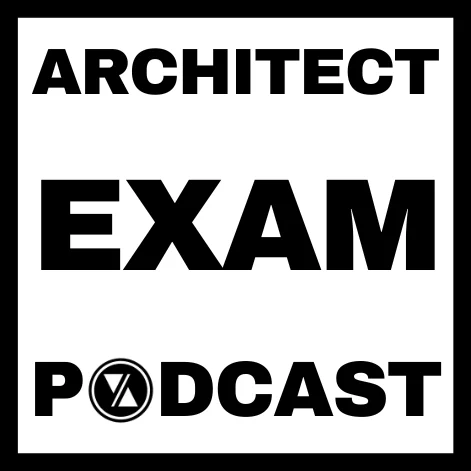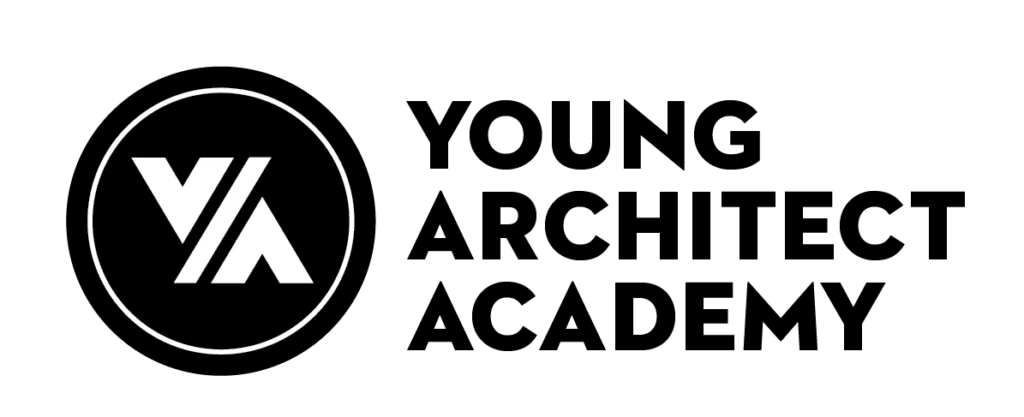The AIA C401 Standard Form of Agreement Between Architect and Consultant establishes clear relationships, communication protocols, and liability protection between architects and their design consultants. This essential AIA contract document protects all parties through defined roles, responsibilities, and professional boundaries while ensuring successful project coordination and risk management.
The Reality Check: When Consultant Coordination Goes Wrong
Picture this: You’ve hired a structural engineer and a pool designer for a beautiful residential project. Everything seems perfectly coordinated in your mind. The structural engineer assumes the pool consultant will handle the entire pool structure. Meanwhile, the pool designer thinks the engineer will provide the structural shell design while they focus on finishes and equipment.
Suddenly you realize there’s a massive gap in your construction documents. Nobody’s actually designing the pool structure itself. You’ve got a beautiful hole in the ground with nowhere to put the water.
Sound familiar?
This exact scenario plays out on projects across the country when consultant relationships aren’t clearly defined upfront. And it’s exactly why the AIA C401 Standard Form of Agreement Between Architect and Consultant exists.
Understanding this critical AIA contract isn’t just about avoiding expensive coordination nightmares. It’s essential knowledge for passing your ARE exams and protecting your practice throughout your career. Whether you’re studying for PcM, PjM or CE ARE exams or managing your first major project with multiple consultants, mastering the AIA C401 can save you from costly mistakes and professional headaches.
Let’s break down how this document works and why it matters so much for your success.
What is the AIA C401?
The AIA C401 has a formal name that sounds about as exciting as watching paint dry: the Standard Form of Agreement Between Architect and Consultant. But don’t let the boring title fool you – this AIA document is your secret weapon for successful project coordination.
At its core, this architect consultant agreement establishes the relationship and protocol between you as the architect and the consultants you hire to support your design work. Think of it as the rule book that makes sure everyone knows their role, their responsibilities, and how they should communicate throughout the project.
Here’s what makes this AIA contract document so important: the AIA C401 doesn’t exist in isolation. It’s part of the AIA documents family, connecting directly to your B101 (Owner-Architect agreement) and the A201 General Conditions. These contract documents work together like a chain of connected obligations flowing from the owner all the way down to your consultants.
Understanding these interconnections is something we bring a lot of attention to in our comprehensive AIA Contracts 101 course, where we show you exactly how C401, B101, and A201 create this seamless chain of professional relationships.
Types of Consultants Covered
The AIA C401 covers the architecture consultants you hire to inform your architectural design work. The most common ones include:
Standard Engineering Consultants:
- Structural engineers
- Mechanical engineers
- Electrical engineers
- Plumbing engineers
Specialty Design Consultants:
- Acoustic consultants
- Lighting designers
- Building envelope specialists
- Pool design experts
- Kitchen consultants
But here’s where it gets important – not all consultants go through the AIA C401. Some are typically hired directly by the owner, not through you as the architect.
Owner-Hired Consultants:
- Surveyors
- Geotechnical consultants
- Environmental consultants
- Hazardous materials testing
While the AIA C401 doesn’t prohibit architects from hiring these consultants, it’s typical practice for owners to hire them directly because of liability and professional responsibility.
Here’s the key principle:
Anything existing = owner hires.
Anything new or proposed = architect hires.
This division of responsibility extends to construction specifications where architects specify new materials and systems while owners handle existing condition investigations.
Dividing responsibility like this, protects the design team from being held responsible for existing conditions they had no control over. If there’s a mistake in the survey or hazardous materials report, the owner hired those consultants to investigate what’s already there.
But when you hire a structural engineer to design a new foundation, that coordination and review becomes your responsibility as the architect.
The Four Critical Provisions That Shape Every Project
Understanding the AIA C401 means mastering four key provisions that appear repeatedly on the ARE exams and protect your practice in the real world. These four critical areas are:
- Relationship Structure – How the architect-consultant relationship is legally defined
- Communication Protocol – Who talks to whom and when
- Compensation Structure – How payment flows through the project team
- Insurance and Liability – Who’s responsible for what when things go wrong
These critical provisions and their real-world applications are covered extensively in our AIA Contracts 101 course where we break down C401 alongside B101 and A201 to show you exactly how these contracts work together in practice.
Let’s break down each provision and see how they work in practice:
1. Relationship Structure
Your consultant is an independent contractor, not an employee of your firm. This distinction matters more than you might think.
Even though your consultant works independently, you remain responsible to the owner for the entire project. This includes reviewing and coordinating all the work produced by consultants you’ve hired.
This creates what’s called the flow-down concept. Your obligations from the B101 flow down to your consultant through the architect consultant agreement. Think of it as a chain of responsibility: Owner to Architect (B101), then Architect to Consultant (AIA C401).
Here’s a real-world example of why this matters:
Imagine you hire both a structural engineer and a pool designer. Without clear coordination, the structural engineer might assume the pool consultant handles all structural work, while the pool designer expects the engineer to provide the structural shell. Suddenly there’s a gap in your construction documents, and it’s your responsibility as the architect to catch and resolve this coordination issue.
The relationship structure in this AIA contract makes it clear that you’re the central coordinator, responsible for reviewing and integrating all consultant work before it reaches the client.
2. Communication Protocol
This might be the most important provision for protecting your practice: all communications between your consultant and the owner or contractor flow through you.
Why does this matter? When consultants communicate directly with owners or contractors, several problems can arise:
- Scope creep – promises get made that weren’t in the original agreement
- Mixed messages – different team members might give conflicting information
- Coordination issues – changes get discussed that affect other consultants’ work
- Liability exposure – you become responsible for coordinating work you didn’t know was happening
Here’s how this played out on a recent project:
I hired an interior designer who started reaching out directly to my client to schedule meetings. While my client really liked the designer, this was actually a breach of our C401 agreement. I had to explain that meetings needed to be coordinated through me so I could ensure proper project coordination and prevent scope creep.
The communication protocol isn’t about control – it’s about protection. It maintains clear project coordination and ensures you can fulfill your responsibilities under the B101.
3. Compensation Structure
The compensation structure is straightforward but has important implications:
You pay the consultant directly – not the owner. But here’s the key detail: your payment to the consultant occurs promptly after you receive payment from the owner.
This creates a clear payment chain that protects everyone involved. It also means you need to factor consultant costs into your fee proposal from the beginning. You can’t just wing it and hope everything works out.
Additional services require written authorization before work begins. This protects both you and your consultant from scope creep and ensures changes are properly documented and approved – similar to how construction change orders must be properly documented to protect all parties during construction.
4. Insurance and Liability
Each party maintains their own professional liability insurance. Your consultant’s errors and omissions policy covers their scope of work, while your policy covers your responsibilities. Understanding how these architect insurance policies respond to different claim scenarios is crucial for proper risk management.
This provision helps define where your liability starts and stops. You’re not responsible for every detail of what your structural engineer designs, but you are responsible for reviewing their work and ensuring it coordinates with your architectural design.
This AIA standard contract helps establish these boundaries clearly, which is crucial for risk management and insurance coverage.
Intellectual Property: Who Owns What?
One area that doesn’t get enough attention but can cause real headaches is intellectual property rights. The AIA C401 addresses who owns the work product when you and your consultant create something together.
Here’s where this gets tricky in practice:
Let’s say you hire a pool consultant and together create a stunning design for a luxury residential project. The project gets built, looks amazing, and the photos end up on your website. A future client sees it and says, “I want that exact same pool design!”
What you can’t do is just grab the previous project drawings and copy that pool design to the new client’s project. Similarly, the pool consultant can’t copy your architectural drawings from the previous design for any future work.
The AIA C401 establishes that:
- All work created for the original project is owned by the respective parties
- You each have limited licenses to use the other’s work only for that specific project
- If you want to use a similar design on a new project, you need to hire the consultant again or create new drawings
This AIA document is also a good place to establish rights for using final construction photos in business promotion and marketing, so both you and your consultant can showcase the work without intellectual property concerns.
When Things Go Wrong: Claims and Disputes
Despite your best planning and clear agreements, disputes can still happen. Construction is complicated, and when multiple professionals are involved, things can go sideways.
Understanding how construction claims and disputes typically develop can help you structure consultant relationships to minimize these risks.
The good news is that the AIA C401 includes provisions that help resolve issues when they arise. The dispute resolution process mirrors your prime agreement with the owner, and there are indemnification provisions that spell out who protects whom.
Here’s how this works in practice:
Imagine there’s a discrepancy in your structural engineer’s drawings, and your client is upset. Here’s what’s interesting: the architect consultant agreement actually protects your structural engineer in this scenario.
Why? Because it was your duty as the architect to coordinate and review the structural engineer’s drawings before construction. Your client can’t skip over you and go directly after your consultant from a legal standpoint without first engaging with you and your professional liability insurance.
The dispute has to flow through the same chain of responsibility we discussed earlier. The owner can’t bypass you and go straight to your consultant. This protects your consultant from getting dragged into disputes that should really be between you and the owner, and it protects you by ensuring you’re involved in any conversations about work you were responsible for reviewing and coordinating.
AIA C401 Throughout Your ARE Exams
Understanding how consultant relationships work isn’t just useful for one part of your career – it’s basic knowledge that applies across every phase of project delivery and every division of the ARE.
In Practice Management (PcM):
Understanding consultant agreements is essential for managing project teams, controlling liability, and maintaining profitable operations. You’ll need to know how to set up consultant contracts, manage their scope, and protect your practice through proper agreements. For PcM candidates, consultant coordination and liability management are core topics we cover in depth in PcM 101 Practice Management exam course.
For Project Management (PjM):
This AIA contract provides the framework for coordinating consultant deliverables, managing schedules, and maintaining quality control throughout the project. You’ll coordinate consultant work, manage their submissions, and ensure their work integrates with the overall project timeline. Project managers need to understand consultant agreements for effective team coordination – skills we develop in PjM 101 Project Management exam preparation course.
During Programming & Analysis (PA):
You’ll work with architectural consultants to understand site constraints, zoning requirements, and feasibility studies. The architect consultant agreement establishes how you coordinate their input into your analysis and ensures their specialized knowledge supports your programming decisions.
In Project Planning & Design (PPD):
Your structural, mechanical, and electrical consultants become crucial team members. This AIA document defines how you coordinate their design input with your architectural design and ensure all systems work together effectively.
Throughout Project Development & Documentation (PDD):
Consultant coordination becomes critical as drawings develop. The AIA C401 clarifies your role in reviewing and integrating their work into the construction documents and ensures nothing falls through the cracks.
During Construction & Evaluation (CE):
Your consultants may need to review shop drawings and construction submittals, respond to RFIs, or visit the site. The architect consultant agreement establishes the communication protocols for these activities and ensures their input supports successful construction administration. During construction administration, the C401 becomes critical for managing consultant involvement, which we explore thoroughly in CE 101 Construction and Evaluation exam preparation.
The beauty of understanding this AIA contract is that it gives you a consistent framework for managing consultant relationships regardless of project phase or complexity.
Best Practices for Using the C401
Based on years of practice and seeing what works (and what doesn’t), here are the essential best practices for using consultant agreements effectively:
Always Use Standard Forms
Use standard AIA contracts like the AIA C401 rather than creating custom agreements. I know it’s tempting to modify language or create your own contracts, but standard forms have been through years of legal review and real-world application.
I also know that AIA contracts cost money – and that can be a tough pill to swallow when you’re watching your project budget. But think of it as cheap insurance. The cost of purchasing standardized AIA contracts is always less expensive than paying for a lawsuit because you used sloppy or inadequate contract language.
When you start changing contract language or using free templates you found online, you’re creating risks that might not protect you if something goes wrong. Stick with the tested, proven documents that have protected thousands of architects for decades.
Understand Your Coordination Role
You’re not just hiring consultants and hoping for the best. You have active responsibilities to review their work, coordinate between different consultants, and ensure everything fits together properly.
This coordination work continues throughout the entire project, not just during design development. It’s ongoing responsibility that affects project success and your liability exposure.
Maintain Communication Control
Don’t let consultants communicate directly with your client or the contractor without your involvement. It might seem like micromanaging, but it’s actually protecting everyone from miscommunications and scope creep.
When consultants bypass you, promises get made that affect budgets and schedules. Changes get discussed that impact other consultants’ work. Suddenly you’re trying to coordinate work you didn’t even know was happening.
Know Your Insurance and Liability Boundaries
Understand what you’re responsible for and what you’re not. This AIA standard contract helps define these boundaries, but you need to read and understand the specific language.
You’re responsible for reviewing and coordinating consultant work, but you’re not responsible for their means and methods or the accuracy of their detailed calculations. Know where your responsibility ends and theirs begins.
Document Everything
When consultants want to do work outside their original scope, get it in writing before they start. This protects both of you and keeps the project budget under control.
Additional services can quickly spiral out of control if they’re not properly documented and authorized. A simple email confirming the scope and fee for extra work can save major headaches later.
Understanding how all these AIA contracts work together across your entire ARE journey is exactly why we created ARE Bootcamp – our 10-week coaching program that helps you see the bigger picture connections between contracts, exams, and real-world practice.
Final Thoughts: Why the AIA C401 Matters for Your Success
The AIA C401 creates a clear framework for successful consultant relationships. It encourages proper project coordination and helps you manage risk throughout every project.
When you understand how this architect consultant agreement works, you’re not just protecting yourself legally – you’re setting up every project for success. Clear roles, defined communication protocols, and proper liability boundaries benefit everyone involved: you, your consultants, and your clients.
For ARE candidates, mastering this AIA contract means understanding how professional relationships work in practice. It’s not about memorizing contract articles – it’s about understanding the decision-making framework that will guide your career.
Whether you’re studying for your exams or already managing projects, the principles in the AIA C401 will help you coordinate more effectively, avoid costly mistakes, and deliver better results for your clients.
Remember: understanding AIA contracts isn’t just about legal protection. It’s about creating the foundation for successful projects and professional relationships that will serve you throughout your entire career.
Get the complete foundation in our comprehensive AIA Contracts 101 course for mastering all essential contract relationships, or join ARE Bootcamp for comprehensive coaching that connects contract knowledge across all six ARE divisions.



